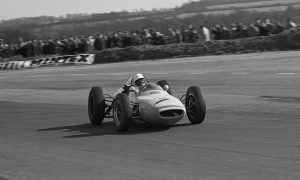PIPEWORK AND TURBO LAG
With the compressor located at the back of the engine, the Renault power unit architecture requires longer pipework than its Mercedes counterpart.
First, it takes some time for the air to go from the airbox to the compressor. Then, if you keep the PU106B as set up in the Mercedes W06 as your reference point, the compressed air has to travel over a greater distance to reach the intercooler.
As shown on the picture above, the big silver duct (the one with a purple pipe collar) is quite elongated. This theoretically means that more power is required to feed compressed air towards the intercooler. As a result, response time would be longer too, thus creating what is called “turbo lag”.
Red Bull has actually come up with a split-intercooler design, with one element featuring in each sidepod. Once the airflow has been cooled down, a specific duct is routing it towards the airbox, which works under pressure, and then towards the air intake plenum chamber.
Unlike Renault, Mercedes and Ferrari both have a single intercooler setup. However, the Silver Arrow’s intercooler has a central positioning and is lodged directly within the monocoque, while its Italian counterpart is placed within the Vee of the V6 engine, with both opting for such a layout in order to limit airflow resistance in the sidepods.
One can also easily spot the high-pressure common rail direct fuel injection system on the image above.








